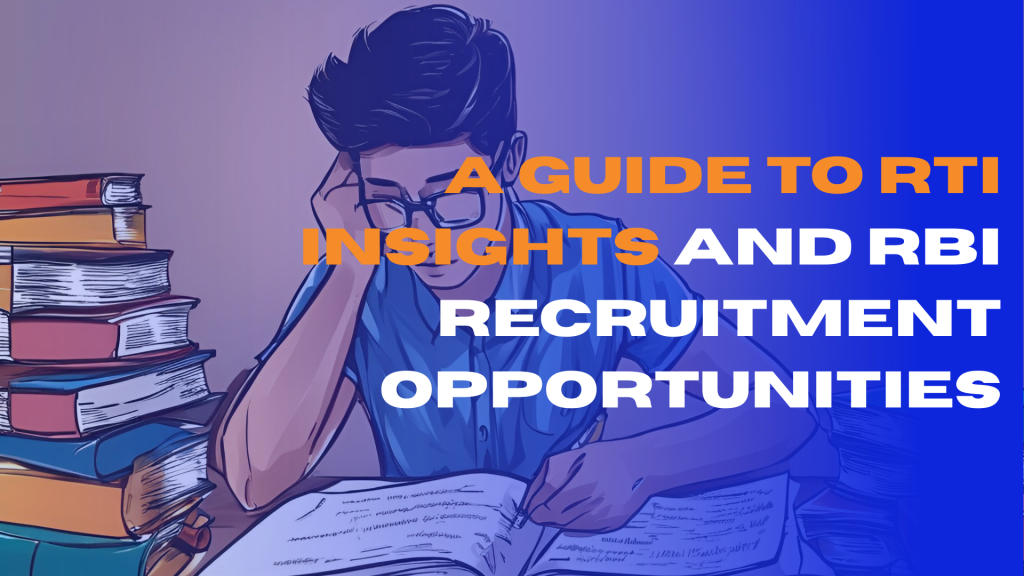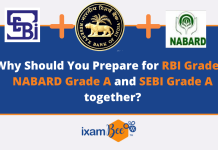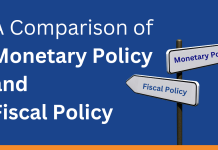In the highly competitive landscape of government exams, the Reserve Bank of India (RBI) stands tall as one of the most sought-after institutions among aspirants of said exams. Its distinguished Grade A and Grade B positions attract thousands of candidates every year. These hopefuls are always eagerly awaiting RBI recruitment notifications so that they can plan out their exam preparation. These rather lucrative roles offer competitive salaries and benefits to candidates while giving them hope of a stable and fulfilling career within the banking and financial sector.
Recently, a significant amount of information came to light through a Right to Information (RTI) request. It has highlighted the current staffing scenario within the RBI, offering valuable insights for aspirants of these exams. The RTI findings have revealed a considerable number of vacancies across various departments, indicating a strong likelihood of more recruitment initiatives being possible in future. This news brings hope to job seekers, giving them a better view of what chances they may have when the new RBI recruitment cycle begins. For many, it shows how important it is to start getting ready early to stay ahead of others when it comes to competitive exams.
To get ready, they need a clear plan. For one, they should try to focus on topics like General Awareness, Quantitative Aptitude and English. GK should especially focus more on banking and finance. Practice often with mock and learn from past RBI exams. By staying steady and planning smartly, they can make the most of these chances. The information taken from the RTI is a good nudge for them to stay on track and alert as they aim for a top job at the Reserve Bank of India. This blog will take a closer look and share some tips to candidates to help them prepare better.

Decoding RTI Data: Current Staffing and RBI Recruitment Needs
The RTI data paints a detailed picture of the staffing situation across various grades in the Reserve Bank of India (RBI), offering key insights into potential recruitment opportunities. At the Grade F (Chief General Manager) level, the sanctioned strength stands at 133, while the current strength is slightly higher at 137, with four officers more than required. This surplus clearly indicates that there is no immediate need for recruitment in this category.
For Grades D and E (combined), the sanctioned strength is 746, whereas the current strength is 766, resulting in a surplus of 20 officers. Like Grade F, this surplus suggests no urgency for recruitment in these grades in the near future.
In the case of Grades B and C (combined), the sanctioned strength is 3,584, but the current strength falls short by 89 officers at 3,495. However, with an ongoing recruitment process to fill 94 positions, the shortage is expected to be resolved, potentially leaving a surplus of 5 officers. This indicates that significant recruitment for Grade B positions is unlikely in the near term.
The most notable observation is at the Grade A level, where there is a substantial shortage of 1,399 officers compared to the sanctioned strength. This shortfall signals a strong likelihood of significant recruitment activity. The vacancies may be addressed in multiple recruitment cycles, with batches of 300-500 officers being hired. For Class 3 (Assistants), there is a shortage of 217 officers, making recruitment necessary to address this gap. Similarly, Class 4 (Attendants) faces a shortage of 442 officers, indicating that recruitment in this category is also essential to fill the vacancies.
The data reveals that while higher grades such as Grade F and Grades D & E do not require immediate hiring, there are substantial opportunities for aspirants in Grade A, Class 3, and Class 4 positions, making it a critical time for candidates to prepare strategically. You can take a look at the staffing scenario table given below to understand more:
| Grade/Class | Sanctioned Strength | Current Strength | Surplus/Shortage | Recruitment Outlook |
| Grade F | 133 | 137 | +4 | No immediate need |
| Grades D & E | 746 | 766 | +20 | No immediate need |
| Grades B & C | 3,584 | 3,495 | -89 (94 ongoing) | Minimal |
| Grade A | – | – | – 1,399 | High recruitment need |
| Class 3 | – | – | -217 | Recruitment required |
| Class 4 | – | – | -442 | Recruitment required |
This detailed analysis provides a roadmap for aspirants, emphasizing the areas where recruitment is most likely and helping them tailor their preparation plans accordingly.
The staffing data revealed through the RTI provides a clear picture of recruitment possibilities across various grades in the Reserve Bank of India (RBI). One of the most significant takeaways is the acute shortage of 1,399 officers at the Grade A level. This large shortfall strongly suggests that substantial recruitment will occur soon. Aspirants can expect multiple recruitment cycles to address these vacancies, with each cycle potentially hiring between 300-500 candidates. This is excellent news for those preparing for RBI Grade A, as the demand for officers in this grade is evident.
In contrast, the outlook for Grade B recruitment is relatively subdued. With ongoing recruitment filling 94 positions, the current shortfall will turn into a surplus of 5 officers. This suggests that any further recruitment for Grade B positions might be limited to a small intake, possibly in double-digit numbers. Aspirants for this grade should still stay prepared but manage their expectations accordingly.
For Grades D, E, and F, the situation is entirely different. The data shows overstaffing in these grades, with no immediate vacancies. As a result, recruitment in these categories appears highly unlikely in the foreseeable future. Candidates targeting these levels may need to consider alternative plans or wait for new developments.
Insights for Aspirants of the RBI Recruitment
The RTI data offers valuable insights into potential recruitment opportunities at the Reserve Bank of India (RBI), particularly for Grade A and Grade B positions. However, irrespective of these speculated timelines, aspirants must remain focused and proactive in their preparation. Success in RBI exams demands a well-structured approach and consistent effort.
For RBI Grade A, candidates should emphasize key areas like Economic and Social Issues (ESI), Finance and Management (FM), and English Descriptive Writing, along with General Awareness focusing on current affairs, particularly related to banking and economics. Regular practice with mock tests and solving previous years’ papers is vital to understanding the exam pattern.
For RBI Grade B, aspirants should focus on Quantitative Aptitude, Reasoning, and English, along with ESI and FM. Strengthening conceptual clarity and practicing time management are essential. Candidates should also stay updated on financial policies and the Indian economy.
By maintaining a disciplined study routine and leveraging high-quality resources, candidates can maximize their chances of securing these prestigious positions.
Understanding the RBI Recruitment Exam Structure
The RBI Grade A and Grade B exams follow a structured three-phase process designed to comprehensively evaluate candidates’ skills, knowledge, and aptitude. These phases are integral to selecting the most suitable candidates for these prestigious roles in the Reserve Bank of India.
Phase 1: Preliminary Exam
The preliminary exam is an objective-based test designed to screen candidates for the next phase. It typically includes sections on Quantitative Aptitude, Reasoning Ability, English Language, and General Awareness. For both Grade A and Grade B, the exam duration is 2 hours, with sectional timing. The cut-off is determined based on performance, and only those who meet the criteria proceed to Phase 2.
Phase 2: Main Exam
The main exam tests candidates’ in-depth knowledge of specific subjects. For Grade A, it focuses on Economic and Social Issues (ESI), Finance and Management (FM), and English Descriptive Writing. For Grade B, the focus remains on ESI, FM, and advanced-level descriptive English.
Interview
Contrary to common belief, interviews are conducted for both Grade A and Grade B positions. This phase assesses the candidate’s communication skills, subject knowledge, and suitability for the role. The final selection is based on cumulative scores from Phase 2 and the interview.
| Phase | Exam Name | Sections/Aspects | Marks | Duration | Purpose |
| Phase 1 | Preliminary Exam | Quantitative Aptitude, Reasoning Ability, English Language, General Awareness | 200 | 120 minutes | Screening candidates by testing general aptitude, reasoning, and awareness. |
| Phase 2 | Main Exam | Economic & Social Issues (ESI), Finance & Management (FM), English Descriptive Writing | 300 | Variable by section | Testing advanced knowledge and descriptive writing skills. |
| Phase 2 | Interview | Personal Interaction | 75 | 20-30 minutes | Evaluating communication skills, subject expertise, and role suitability. |
Notes:
- The Preliminary Exam (Phase 1) is common for both Grade A and Grade B and serves as a qualifying stage.
- The Main Exam (Phase 2) is specialized and tests topics like ESI and FM in depth, particularly relevant for the RBI’s operational functions.
- The Interview (Phase 3) is conducted for both Grade A and Grade B positions and significantly impacts the final selection.
- This table simplifies the overall structure, helping aspirants understand each phase and prepare accordingly.
RBI Exams Syllabus and Exam Pattern
The RBI Grade A and Grade B exams are structured to assess candidates through three distinct phases: the Preliminary Exam (Phase 1), Main Exam (Phase 2), and the Interview.
Phase 1: Preliminary Exam
This phase consists of four key subjects: Quantitative Aptitude, Reasoning Ability, English Language, and General Awareness. While sections like Quantitative Aptitude, Reasoning, and English Language might become more qualifying in nature (i.e., they will determine eligibility to move to the next stage but may not have a significant impact on the final score), General Awareness is expected to remain a crucial scoring area. Candidates must focus on staying up to date with current affairs, banking knowledge, and economic trends, as this section can make a significant difference in a candidate’s overall score.
Phase 2: Main Exam
In the second phase, candidates face more specialized subjects, including Economic and Social Issues (ESI), and Finance and Management (FM). This phase is a combination of objective and descriptive components. While the objective sections test technical knowledge, the descriptive section assesses a candidate’s ability to express ideas clearly and effectively, particularly in English. Aspirants should prepare extensively for these subjects, focusing on understanding core concepts and current economic issues.
Interview
The final phase involves an interview that evaluates a candidate’s personality, knowledge, and suitability for the role. It provides a chance for candidates to demonstrate their communication skills, subject matter expertise, and overall fit for the RBI.
Expected Changes in Exam Pattern
Future changes are expected to include a greater emphasis on General Awareness, with analytical questions being incorporated to test critical thinking. Moreover, the weightage for core subjects like ESI, Finance, and Management in Phase 2 is likely to increase, and descriptive answer writing will continue to play an important role in evaluating candidates’ ability to communicate effectively.
Strategic Subject-Based Preparation for RBI Recruitment
Let’s take a look at some preparation strategies for the RBI exams:
General Awareness
General Awareness is a crucial section in both Phase 1 and Phase 2 of the RBI exam. Candidates should focus on current affairs, banking policies, economic developments, and social issues which can be checked out from ixamBee’s BeePedia . Regularly reading newspapers, financial magazines, and reports from credible sources like the RBI website will keep aspirants well-informed. Mock tests and quizzes on current events can further strengthen retention and enhance performance in this vital section.
Quantitative Aptitude, Reasoning, and English
These sections, likely qualifying in nature, still play a significant role in clearing Phase 1. For Quantitative Aptitude, focus on mastering basic concepts like percentages, profit and loss, and time and work. Reasoning Ability requires practice with puzzles, seating arrangements, and logical deductions. English demands regular reading and grammar practice to ensure clarity and accuracy. Aim for consistent practice through online tests to improve speed and accuracy.
Economic and Social Issues (ESI)
ESI is an essential subject for RBI Grade A and B exams. Start with understanding key topics such as the Indian economy, social sector policies, and sustainable development. NCERT books provide a strong foundation, while RBI publications and government reports offer the latest updates. Keep up with economic surveys, budget speeches, and policy changes to stay current. Regular revision and solving past papers are essential to mastering this subject.
Descriptive Writing
Descriptive Writing is critical in both Phase 2 and the interview. Developing a structured approach to essays and answers is essential. Focus on clarity, coherence, and analytical thinking. Practice writing essays on current economic, social, and policy issues, ensuring that your arguments are well-supported by facts. Time yourself during practice to develop efficiency. Reading editorials and analysis from reputed sources can improve content and writing style.
Summing Up
The RTI revelations have provided a clear picture of the recruitment landscape at the RBI. While the data offers valuable insights, aspirants must remember that consistent preparation is the key to success. Instead of waiting for notifications or speculating about vacancies, candidates should focus on building a strong foundation. The current year presents a unique opportunity for first-time aspirants, especially for Grade A positions. With substantial vacancies and a structured preparation strategy, aspirants can position themselves for success.
ixamBee specializes in providing expert guidance and resources for banking exams 2024, ensuring that you are well-prepared for the Upcoming Bank Exams like RBI Grade B, NABARD Grade B, IBPS SO, and more. Our courses align with the bank exam calendar 2024, covering all the essential topics. With a focus on the upcoming bank jobs, our Previous Year Papers, BeePedia, SSC CGL, SSC CHSL, SSC MTS and other Mock Tests are designed to help you excel in upcoming banking exams.
Also Read:
Foreign Banks in India: A Comprehensive Overview
The Complete Guide to Current Affairs Preparation for Banking Exams
A Comprehensive Overview of the Union Budget 2024-2025















